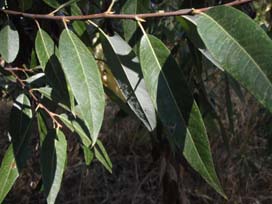
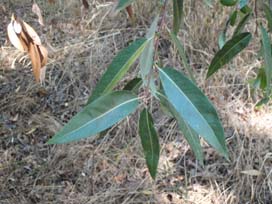
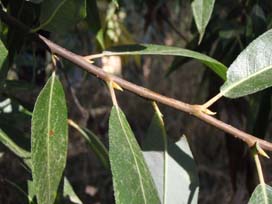
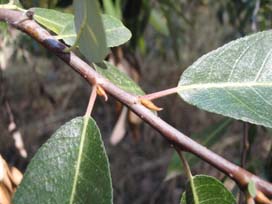
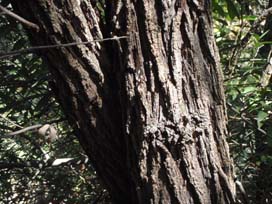
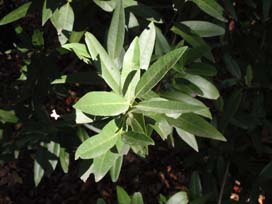
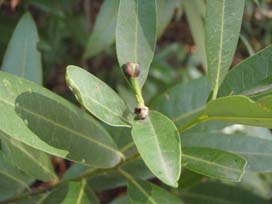
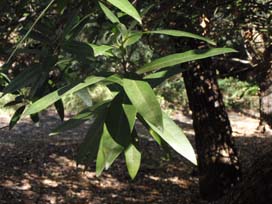
willow
Salix spp.
Family: Salicaceae.
Type: Deciduous shrub to small tree.
Branching: Alternate.
Leaves: Long, narrow leaves that come to a point.
Twig: Often colored with a reddish or yellowish cast on the newest growth. The buds of the willow are fairly distinct, long and pointed at the tip, like little dog toenails. The bark of willows tends to look like braided ropes.
Fruit & Flower: Not discussed.
Miscellaneous: In California there are 30 species of willow, and there are hundreds of species worldwide. They are essentially the same ecologically, so from the perspective of this class it is not important to distinguish them down to species. The trembling aspen is in the same family, the Salicaceae. Willow tends to grow right along river banks, in the most disturbed areas (the front, or slick); they are extremely hardy. They have several different methods of asexual reproduction, in response to this high level of disturbance: belowground roots can have buds on them (suckering, like the aspen), belowground stems (rhizomes) can also sprout, branches that break off can take root (fragmentation), and a tree that falls to the ground can start new growth upwards (tipping).
The deciduousness of the willow and other riparian trees can be explained by several factors. Moisture and nutrients are not limited in the riparian zone, due to deposition of new nutrients with every flood of the river. On the other hand, temperatures are cooler because of the lower elevation, so freezing in winter is more likely, which would damage broad evergreen leaves.
 |
 |
 |
 |
 |
 |
 |
 |